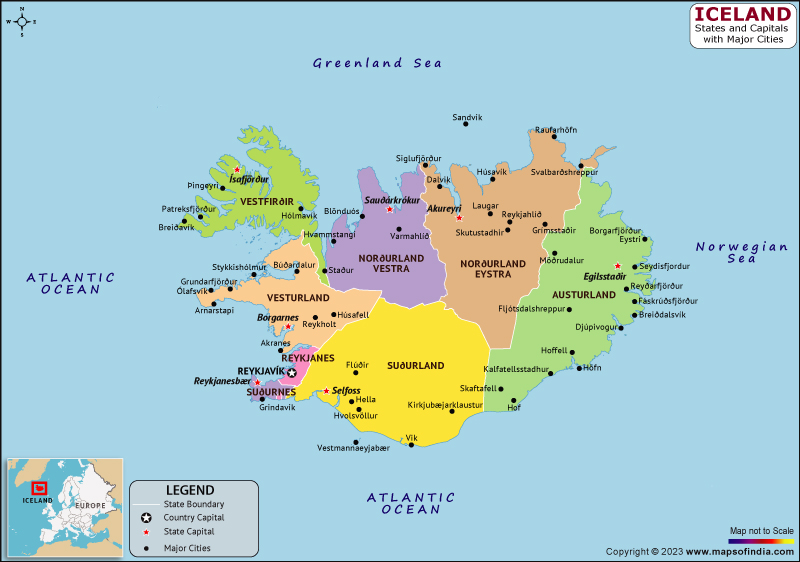Iceland is a Nordic island located in the North Atlantic as well as the Arctic Oceans. It is also known as the least populated country. The total area of Iceland is 103.592 km2. It is known as the 18th-largest island in the world and the second-largest island in Europe.
Reykjavik, the capital and largest city of Iceland, is where 36% of the nation resides. According to the UN's Human Development Index for 2021, Iceland was ranked as the third most developed nation in the world, and it tops the global peace index.
History:
Following the French Revolution and the Napoleonic Wars, Iceland's struggle for independence took shape. It culminated in 1918 with the establishment of the Kingdom of Iceland, which shared the reigning monarch of Denmark through a personal union. Iceland took over management of its foreign affairs and made gradual progress toward total independence from Denmark after German forces occupied Denmark in 1940. Iceland officially became a republic on June 17, 1944, following a plebiscite. Despite the Althing's suspension from 1799 to 1845, the island republic is recognized for having supported the oldest and longest-running parliament in the world.
Culture:
Since Iceland is a Nordic nation, the ancient Vikings had a significant influence there. Icelanders are proud of their heritage and the many traditions that go along with it, especially when it comes to their language, which still has many similarities to the Old Norse that the first Viking settlers would have used.
Icelanders have a vibrant literary, artistic, and culinary culture. Reykjavik, the country's capital, is home to theaters, bookstores, art galleries, and a symphony orchestra. Icelandic music, which combines pop and folk, has developed into its genre.
Language:
The nation of Iceland uses Icelandic as its official language. A member of the North Germanic language family, it is an Indo-European language. Despite a very slight Celtic influence in some of the older Icelandic literature, it is closely related to Norwegian and Faroese. A minority language with constitutional rights and the primary language of the Icelandic deaf community, Icelandic Sign Language was also formally recognized by law in 2011.
Geography:
Iceland is known as "The Land of Fire and Ice" due to its opposing geological characteristics. The term "fire" refers to widespread volcanic activity, and the term "ice" obviously refers to the nation's numerous glaciers, which occupy about 10% of the island.
Catching a glimpse of the aurora borealis, also known as the northern lights, is probably Iceland's most well-known draw. The small Icelandic island of Grmsey, off the northern coast of the main island, lies within the Arctic Circle, which surrounds the main island to the south. Between latitudes 63 and 68°N and longitudes 25 and 13°W, the nation is located.
| Official name | Republic of Iceland |
| Capital | Reykjavík |
| Population | 3.73 lakhs |
| Area | 103,000 km² |
| Language | Icelandic |
| Religion | Christianity and Lutheran State Church. |
| Currency | Icelandic krona |
| Major cities | Reykjavik, Akureyri, Seydisfjordur |
FAQs
Q1.What is the official language of Iceland?
Icelandic is the official language of Iceland.
Q2.What is the capital of Iceland?
Reykjavík is the capital of Iceland.
Q3.What is the currency of Iceland?
The Icelandic krona is the currency of Iceland.
Q4.What is the climate of Iceland?
From -3 to +3 °C in January to +8 to +15 °C in July, the average monthly temperature varies in Iceland. With an average annual precipitation of 400 to 4000 mm depending on location, storms, and rain are common.
Last Updated on: April 24, 2023
